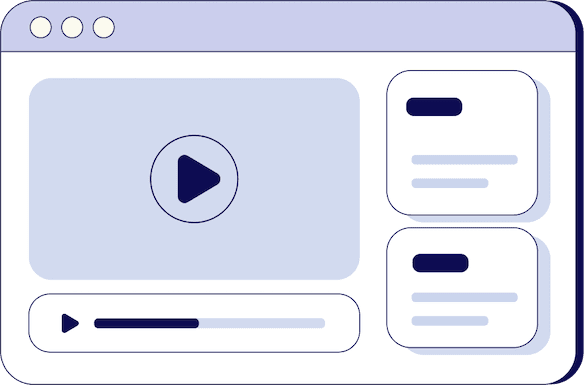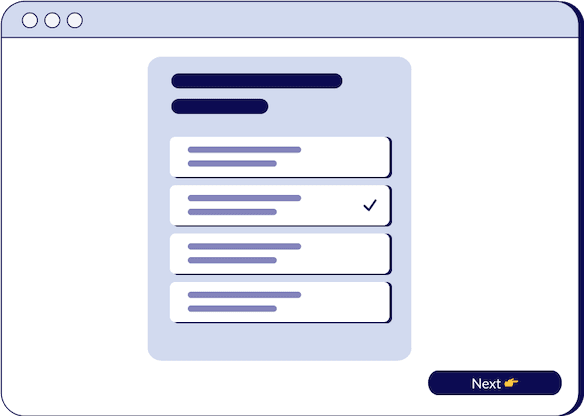
What Your Customer Thinks About Your Sales Presentation
Jeff Shore
Sales Coach

- duration
- 6 min
- Average Score
- 90%
- Stars
- 5
How often do emotions truly sway our decision-making processes, especially in sales? According to a study by the Harvard Business Review, emotions are a primary driver in decision-making, influencing over 95% of our purchase decisions. In the world of sales, understanding and leveraging these emotional undercurrents can be the key to crafting presentations that not only resonate but also leave a lasting impact on customers. This session delves deep into the art of emotional engagement, offering insights into how sales representatives can effectively tap into this powerful tool.
One fundamental aspect to consider is the identification of emotional triggers within customers. These triggers are unique emotional responses that vary from person to person, but often align with common desires such as the need for security, success, or belonging. Sales representatives can identify these triggers by actively listening to their customers, understanding their challenges, aspirations, and what truly matters to them. For instance, in a sales presentation for a software solution, if a customer expresses frustration over inefficient processes, the representative can focus on how the product significantly reduces workload and stress, tapping into the emotional desire for ease and efficiency.
Furthermore, aligning the product's features and benefits with these emotional triggers is crucial. It's not just about listing the features of a product; it's about connecting these features to the emotional outcomes they deliver. For example, if a product offers time-saving capabilities, the sales presentation should emphasize how this feature brings peace of mind and a better work-life balance, directly addressing the emotional need for well-being and time management. In doing so, sales representatives transform a standard feature into an emotionally resonant benefit, making the sales presentation memorable and impactful.
Remember, emotions in sales are not just about making customers feel good; they are about creating a connection that resonates on a deeper, more personal level. This connection is what turns a standard sales pitch into a memorable experience, significantly influencing the customer's decision-making process.
To learn more about identifying and leveraging emotional triggers in your sales presentations, watch this session for in-depth strategies and practical tips. Here, you'll gain insights into how to align your product's features with the emotional needs of your customers, creating presentations that not only inform but also emotionally engage.
Understanding the Remembering Self in Sales
Have you ever wondered how much of your last major purchase decision was influenced by what you remembered from the sales experience? According to a study by the Journal of Consumer Research, customers' memories of their experiences significantly shape their future buying decisions. This phenomenon is grounded in the concept of the 'remembering self,' a pivotal factor in the world of sales. This session explores the intricacies of this concept, shedding light on how it plays a crucial role in shaping customers' perceptions and decisions post-sales presentation.
The 'remembering self' is not just about recalling facts and figures; it's about how customers emotionally recall an experience. Memories are often colored by the most intense moments of an experience and the emotions felt during the concluding part of the interaction. Therefore, sales representatives need to focus not just on the content of their presentations but also on creating emotionally significant moments that customers will remember. For instance, ending a sales presentation with a powerful, emotionally charged story about how the product changed someone's life can leave a lasting impression.
Creating these memorable experiences requires a strategic approach. One effective strategy is to use vivid, relatable storytelling that connects with the customer on a personal level. Stories that evoke empathy, joy, or even surprise can become anchor points in the customer's memory, making the overall sales experience more memorable. Additionally, incorporating elements of personalization in the presentation, such as addressing the customer's specific needs and aspirations, can make the experience more relevant and impactful, thus more memorable.
However, it's not just about the peak moments; it's also crucial to ensure consistency throughout the sales experience. This consistency in delivering value, understanding, and emotional connection throughout the interaction helps in forming a comprehensive and positive memory of the entire sales process. When customers reflect on their experience, a consistent, positive narrative can significantly influence their decision to purchase.
To delve deeper into how the 'remembering self' influences sales and to learn strategies for creating memorable sales experiences, watch this session. Here, you will find insights into crafting sales presentations that not only convey the value of your product but do so in a way that leaves a positive, lasting impression on the customer's memory, thereby influencing their purchase decisions.
Enhancing Customer Engagement Through Emotional Moments
How can a sales presentation transcend beyond just delivering information and truly connect with a customer on an emotional level? The key lies in creating emotionally charged moments that resonate deeply with customers. Emotional engagement is not just about eliciting a reaction; it's about forging a connection that elevates the customer's experience with the product or service being offered. This session dives into practical tips for enhancing customer engagement through strategically crafted emotional moments.
Identifying opportunities to create these emotional moments starts with understanding the customer's needs, desires, and pain points. It involves keen observation and active listening. For instance, if a customer shares a challenge they are facing, this presents an opportunity to empathize and connect. Sales representatives can use this moment to share a personal anecdote or a story of how the product or service successfully addressed a similar challenge. This approach not only demonstrates the product's relevance but also builds trust and rapport by showing empathy and understanding.
The Power of Storytelling in Sales
Storytelling and personal anecdotes are powerful tools in this regard. They transform abstract product features into tangible benefits that customers can emotionally connect with. When a sales rep shares a story of how a product improved someone's life or business, it's easier for the customer to visualize how it might benefit them too. These stories should be relatable, genuine, and aligned with the customer's context, making the sales experience more personalized and impactful.
Moreover, giving customers time to internalize the benefits of a product is essential for meaningful engagement. Rushing through the features and benefits can overwhelm and disconnect the customer. Instead, sales reps should pace the conversation, allowing time for customers to reflect on how the product aligns with their needs and aspirations. Asking open-ended questions that prompt the customer to consider the impact of the product on their personal or professional life can be very effective in this regard.
Empathetic communication is another critical aspect. It involves not just understanding the customer's words but also their emotions and underlying motivations. This empathetic approach can transform a standard sales interaction into an emotionally resonant experience, making the customer feel heard, valued, and understood..
The Science of Emotion-Driven Sales Strategies
Why do emotion-driven sales strategies work so effectively? The answer lies in the complex interplay of psychology and neuroscience that governs human decision-making. Emotions, far from being just fleeting feelings, are powerful drivers that shape our choices and actions. This session delves into the scientific underpinnings of emotion-driven sales strategies, offering a glimpse into how understanding the emotional landscape of customers can profoundly impact sales outcomes.
Neuroscience research has revealed that emotions are not mere byproducts of thought processes; rather, they are integral to the decision-making mechanism in the human brain. When a customer encounters a sales presentation, it's not just the logical aspect of the product or service that they evaluate. They also, often subconsciously, assess how it makes them feel. Emotions like trust, security, excitement, or belonging, evoked during a sales interaction, can significantly influence the customer's inclination to buy.
Sales professionals can harness this knowledge by focusing on building a series of small agreements throughout their sales pitch. This approach is rooted in the psychological principle of commitment and consistency. When customers agree to small, incremental commitments, they are more likely to feel a sense of emotional alignment with the product or service, thereby increasing the likelihood of a final positive decision. These small agreements can be as simple as nodding in agreement to a benefit or verbally acknowledging a problem that the product can solve.
Another aspect to consider is the significance of addressing and understanding the emotional needs of customers. Sales strategies that are empathetic and responsive to these emotional needs tend to be more successful. This involves not just identifying what the customer needs but also why they need it on an emotional level. For example, a customer might need a time-management tool not just for efficiency but also for the peace of mind that comes with having a well-organized schedule. Understanding and addressing these underlying emotional needs can create a deeper connection between the customer and the product.
In this session, you'll gain further insights into how to apply these scientific principles in your sales approach. You'll learn techniques to identify and respond to the emotional needs of your customers, and how to build a series of small agreements that guide them towards the final decision. By the end of this session, you'll have a clearer understanding of the science behind emotion-driven sales strategies and how to apply them effectively to enhance your sales success.
How Triple Session works
Training, Testing, & Feedback
Triple Session's proven formula accelerates your sales performance through consistent, organized practice, backed by measurable results.

Bite-Sized Knowledge
Our expert-led video sessions simplify complex sales concepts into easy-to-digest 5-15 minute videos for better retention.

Test Your Understanding
After each session, there will be a quiz to test your understanding and help you improve on any areas that need more attention.

Evaluate and Grow
Get progress snapshots after each quiz to track your improvements and achieve your sales mastery goals.